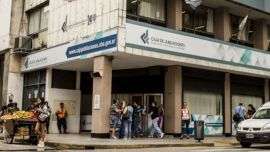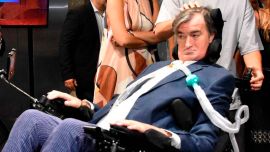Most provinces had already voted before midyear (and many in ruling party ranks argue that Buenos Aires Province would have been wise to do the same) so only four districts will be facing local elections today. These consist of two central majors (namely Buenos Aires City and Buenos Aires Province) and two of the smaller and more outlying provinces, La Rioja and Catamarca.
Buenos Aires Province Governor María Eugenia Vidal is widely considered to stand even less chance than her national boss after Frente de Todos gubernatorial candidate Axel Kicillof almost clinched an absolute majority in the PASO primaries with 49.34 percent, trouncing Vidal and Juntos por el Cambio which struggled to 32.56 percent. “Game over,” the pundits concluded at the time, especially because there is no run-off. Vidal has gained several percent in recent opinion polls since then but not enough to come close, it seems.
Voters will also be electing 23 provincial senators and 46 assembly legislators, as well as 135 mayors with tight races in the provincial capital of La Plata and the huge Atlantic resort of Mar del Plata standing out. In contrast, there is a run-off in this City and it is more than possible that it will be held, since incumbent Mayor Horacio Rodríguez Larreta would need an absolute majority (50 percent + 1) tomorrow to avoid it.
In the PASOs, his share of the vote was 46.48 percent. In a November 24 run-off Rodríguez Larreta would be squaring off against the Frente de Todos mayoral candidate Matías Lammens (currently the president of San Lorenzo football club) whose PASO vote was 31.93 percent.
In Catamarca, Peronist candidate Raúl Jalil has an even bigger cushion than Kicillof, having swept 57 percent of the PASO vote and leaving Radical candidate Roberto Gómez trailing on 25 percent. Half the provincial legislators (20 deputies and eight senators) will also face the voters.
La Rioja took the unusual step of skipping PASO at provincial level but Alberto Fernández garnered almost exactly half the vote in the presidential primaries last August (as against 31.64 percent for President Mauricio Macri), thus indicating that Peronist candidate Ricardo Quintela stands a much better chance than Radical Senator Julio Martínez (who was Macri´s Defence minister until the 2017 midterms). Half the legislature (18 provincial deputies) will also be going to the polls.
Finally, one third of the national Senate (or eight of the 24 districts) is renewed every two years. Each district
has three senators irrespective of size
or population with the winners picking
up two seats and the runner-up the
other. This year the eight districts are
this City, Salta, Tierra del Fuego, Chaco, Río Negro, Santiago del Estero,
Neuquén and Entre Ríos. Of these, only
the Federal Capital will be holding both
local and senatorial elections tomorrow. related news

















Comments